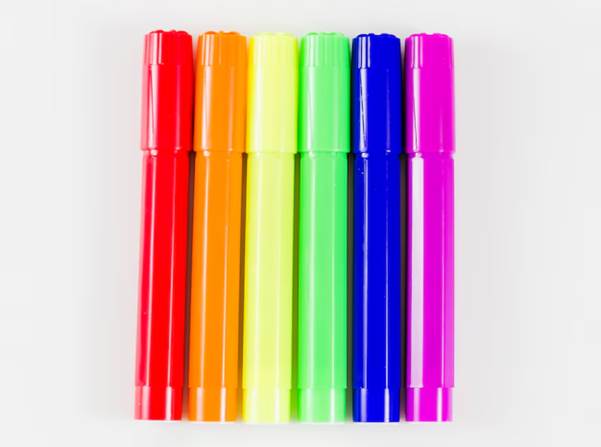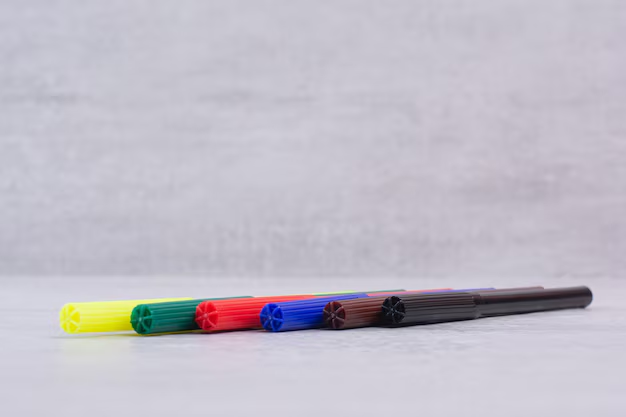How To Use Felt Tip Pens For Creative Lettering
 Super Cool
13 Mar, 2025
9 mins read
88
Super Cool
13 Mar, 2025
9 mins read
88

Some people see a felt tip pen and think of a grocery list or a half-hearted note left on the counter. Others, the ones with better handwriting and, perhaps, better lives, recognize its potential.
These people look at a blank page and see something worth defacing. They understand that letters are not just a means of communication but an opportunity for artistic expression. They know that the right pen, used correctly, can make a word stand up straighter, curve more gracefully, or demand attention.
Using a felt tip pen is not about learning calligraphy with its rigid rules. Nobody needs another excuse to feel inadequate. Instead, it’s about taking what is already natural—your handwriting—and making it bolder, more interesting, or at the very least, legible.
Here is how you can use felt-tip pens for creative lettering.
1. Choose the Right Felt Tip Pen
Felt tip pens come in many varieties, from the thin, precise tips favored by neurotic list-makers to the broad, sweeping markers preferred by kindergarteners and people filling out protest signs. The trick is selecting one that gives you control while allowing for expressive strokes.

A pen with a flexible tip can add weight to downstrokes and keep up with quick, light movements on upstrokes. Anything too stiff will make your letters look like they’ve been cut from a stencil.
Size matters, too. A fine tip works well for detailed work, but a broader tip is the way to go if the goal is bold, eye-catching lettering. The key is finding a pen that doesn’t bleed through the page.
Ultimately, a good felt tip pen should feel comfortable in your hand. If it doesn’t, you will not use it, and if you do, your lettering will look like it was done under duress.
2. Master Pressure and Stroke
Applying the appropriate pressure level will transform an ordinary word into a word befitting a wedding invitation or, at minimum, a dapperly dressed to-do list. Excessive pressure produces thick strokes that give a letter a dramatic, grounded appearance.
On the other hand, lighter strokes have the opposite effect, producing words that seem so easy that it looks as though the words themselves are gliding onto the paper, maybe even with a smirk.

One of the more frequent mistakes is pressing too hard. Not only does this destroy the pen’s life, but it also warps what would otherwise be lovely calligraphy into the style of a ransom note.
Felt-tip pens are made for fluidity. Let them get on with their job instead of forcing the ink onto the paper.
Consistency is the key. If one letter is dainty and the next appears to have been written in a rage, the overall effect is less “artful typography†and more “unhinged manifesto.†Smooth transitions between thick and light strokes will make your lettering appear polished and intentional.
3. Control Letter Spacing and Alignment
Spacing separates professional-looking lettering from something that could be mistaken for a hastily scrawled refrigerator note. Letters need room to breathe.
Cram them together, and they’ll look like they’re in the middle of an uncomfortable elevator ride. Space them too far apart, and the words start to feel disconnected.

Straight alignment is another crucial factor. Words that slope upwards suggest a creeping sense of optimism, while a downward slant gives off the energy of someone slowly giving up. Neither is ideal unless you are illustrating an emotional decline, in which case, proceed.
Guidelines can help keep everything in check, but unless perfection is the goal—and really, it shouldn’t be—eyeballing it is often good enough.
Even spacing and controlled alignment make words look deliberate. A letterform that appears as if it has been carefully placed on the page rather than frantically thrown down, commands attention. And really, isn’t that the goal?
4. Experiment With Styles and Embellishments
Once you’ve got the basics down, it’s time to add the fancy. The beauty of creative lettering is that you can add flair without a glitter explosion. Small details – like loops, swashes, or shadowing – can turn a plain word into a statement.
Too much flair, however, can make the letters look like they’re trying too hard. Balance is key. A slight curl on the end of a letter adds personality, while an abundance of decorative elements makes the word look like it should be on the side of a magician’s van.
Different lettering styles create contrast, depth, and movement in the words. Mixing script with block letters, for example, can highlight keywords without overwhelming the composition. Bold uppercase with delicate cursive can create a visual hierarchy as long as it doesn’t become an identity crisis.
5. Avoid Common Mistakes
Overconfidence is the enemy of good lettering. Many people start strong, only to get too comfortable halfway through and end up with progressively lazier letters, as if they lost interest in their own words.
Using the wrong paper can also be disastrous. While felt-tip pens are forgiving, they do not take kindly to thin, cheap paper. The ink will bleed, feather, and spread like gossip in a small town. Good-quality paper with a smooth finish keeps everything crisp and contained.
Bottom Line
Handwriting might be a dying art, but it’s not dead yet. A well-lettered note or sign can still turn heads, impress strangers, and convince people you know what you’re doing—even if you don’t.
Felt tip pens make it easy to refine your writing without the frustration of scratchy nibs or ink wells. They provide control, fluidity, and just the right amount of forgiveness, which is more than can be said for most things in life.
Perfection is overrated. As long as your letters don’t look like a cryptic message from an anonymous source, you’re already ahead of the game. And if they do, well, at least you’ll keep people guessing.
Written By:
Super Cool



Hotels at your convenience
Now choose your stay according to your preference. From finding a place for your dream destination or a mere weekend getaway to business accommodations or brief stay, we have got you covered. Explore hotels as per your mood.





